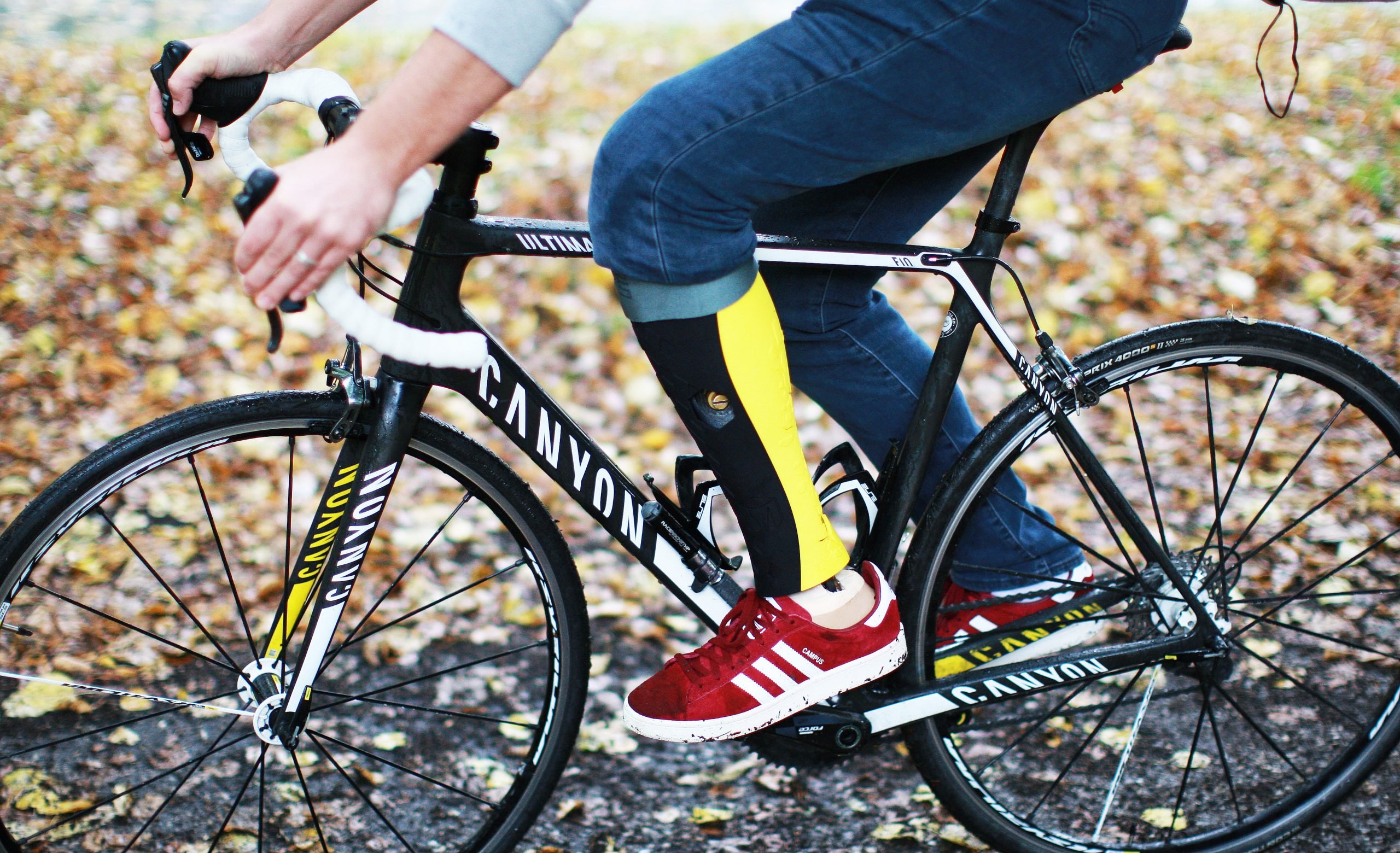
Paralympian champions are the best living proof. Like Utrecht snowboarder Bibian Mentel or the German Denise Schindler. Their prostheses did not prevent them from achieving outstanding performances. People can still function extremely well after an amputation thanks to modern technology. Especially if the prosthesis is made to measure using digital techniques and then made with a 3D printer. Manuel Opitz spoke about how this works and what barriers had to be overcome in what has traditionally been a time-honored and artisanal world for the makers of orthopedic aids. He founded the start-up Mecuris GmbH in Munich together with Wolf-Peter Werner and Jannis Breuninger.
How did you come up with the idea behind Mecuris?
Mecuris stems from two separate research projects. Jannis Breuninger was working on prostheses and prosthetic feet at the Fraunhofer IPA in Stuttgart. In 2007, he was the first in the world to produce a prosthetic thigh using a 3D printer. Simon Weidert is a trauma surgeon at the Medical Center of the University of Munich. He found himself faced with the problem of having to find the right fit for prostheses for his patients. This is why he started experimenting with 3D printing techniques. Both projects had the same objective: to customize and digitize the production of orthopedic aids by using 3D printing techniques. Mecuris eventually grew out of this.
We got to know each other around 2014 through the world of university clinics in Munich. In particular, the MUST Munich 3D Printing coalition offered a wonderful networking opportunity. Mecuris was then founded in 2016 as a spin-off from the Ludwig-Maximilians-University (LMU) Munich. The company now has around 30 employees worldwide and we are growing steadily.
How many comparable companies are out there already and how does your product distinguish itself?

We are focusing on digitizing the entire process. As such, we are the first to do this in the orthopedic sector. We support manufacturers of orthopedic aids in the digitization process. This enables them to digitally design and manufacture customized prostheses and orthoses such as knee braces.
The ‘Mecuris Solution Platform’ is designed as a ‘digital workshop’ with a ready-to-use ‘workflow’. This allows the prosthesis maker to work intuitively, without the need for prior knowledge of programming or 3D printing techniques. In principle, they won’t need anything more than a scanner and our platform. That’s all. The prosthesis maker is even able to involve the user throughout the process. Together they can decide on the design and look and even place patterns, images or texts on the prosthesis. This way, a totally individual design is created.
What has been the biggest obstacle you have had to overcome in this traditionally time-honored sector?
Orthopedic technology is deeply rooted in traditional craftsmanship. We had to learn that digitization takes up much more time than we had originally planned. That’s why we’re at a different point today than where we thought we would have been two years ago.
In the meantime, digital solutions have been developing rapidly. This has given us completely new opportunities that would have been inconceivable when we first started out. But we never thought about giving up. We are still convinced of our idea. There is a need for it out there and we also get that kind of feedback. The question was more about how we could best implement it. It’s always important to us that we learn from setbacks and come out of them smarter and stronger.
What are you especially proud of?
We are the only company in the world that has managed to produce individual prosthetic feet in every size – even for the youngest of children – using a 3D printer. Up until now, wooden feet were used solely for this purpose, just as they were in the 19th century. We have bridged a gap in the existing range with the invention of our FirStep. Of course, we are proud of the subsidies and prizes that we’ve received so far. A few weeks ago, for example, we won the EIT Digital Challenge 2019 in the Wellness category.
What is going to happen to the company over the next few years?
We are going to take a major step towards the digitization of the production process of orthoses in early 2020. At the end of March, the workflow for making orthoses will be available as part of the Mecuris Solution Platform. We are currently testing this application with partners from the sector. We are focusing primarily on applications such as a lower leg brace for night-time use. These are often used for supporting leg corrections in children. We will subsequently integrate lower leg braces for daytime use into the workflow.
Where will the company be in 5 years’ time?
We want to occupy a key global position in the field of digitally manufactured prostheses and orthoses. That is why we are already working on establishing an international network of partners, representatives and printing centers. The Mecuris Solution Platform will gain many new functionalities and digital resources in the near future. We want to continue to improve our system. The whole process needs to be even more user-friendly and faster.

What tips do you have for other start-ups?
If you are putting together a team before starting a business, make sure that it is diverse in every respect. And preferably with people from various age groups, backgrounds and experiences. In our case, this was really essential. Because several complex subjects such as medical technology, software and 3D printing processes all play a role at Mecuris. That’s why our team includes a trauma surgeon and people with knowledge of additive manufacturing and paramedical design, software, finance and running a business, as well as a few generalists. Other start-ups will certainly benefit from that, I think.
You can read more articles about start-ups here.

